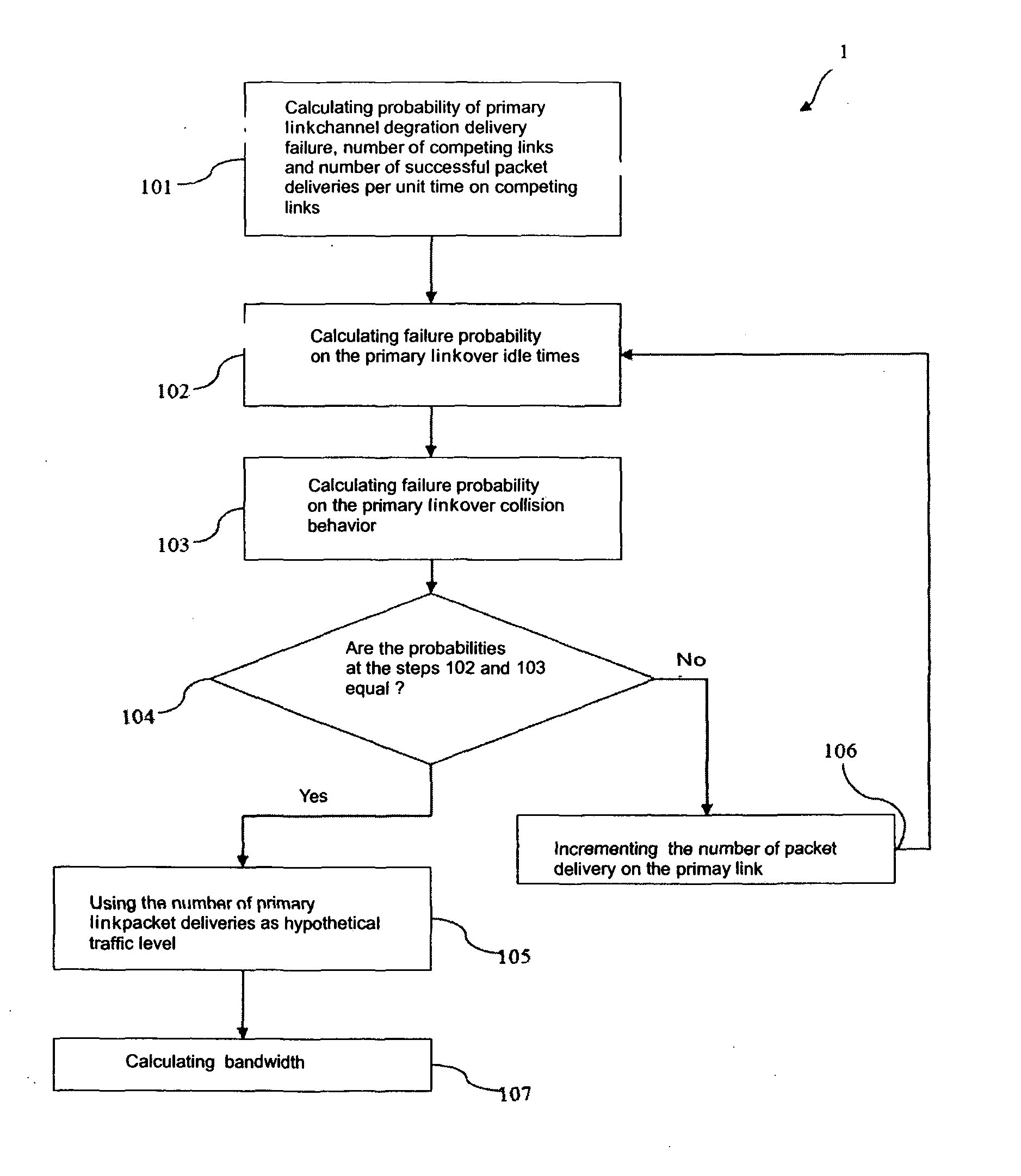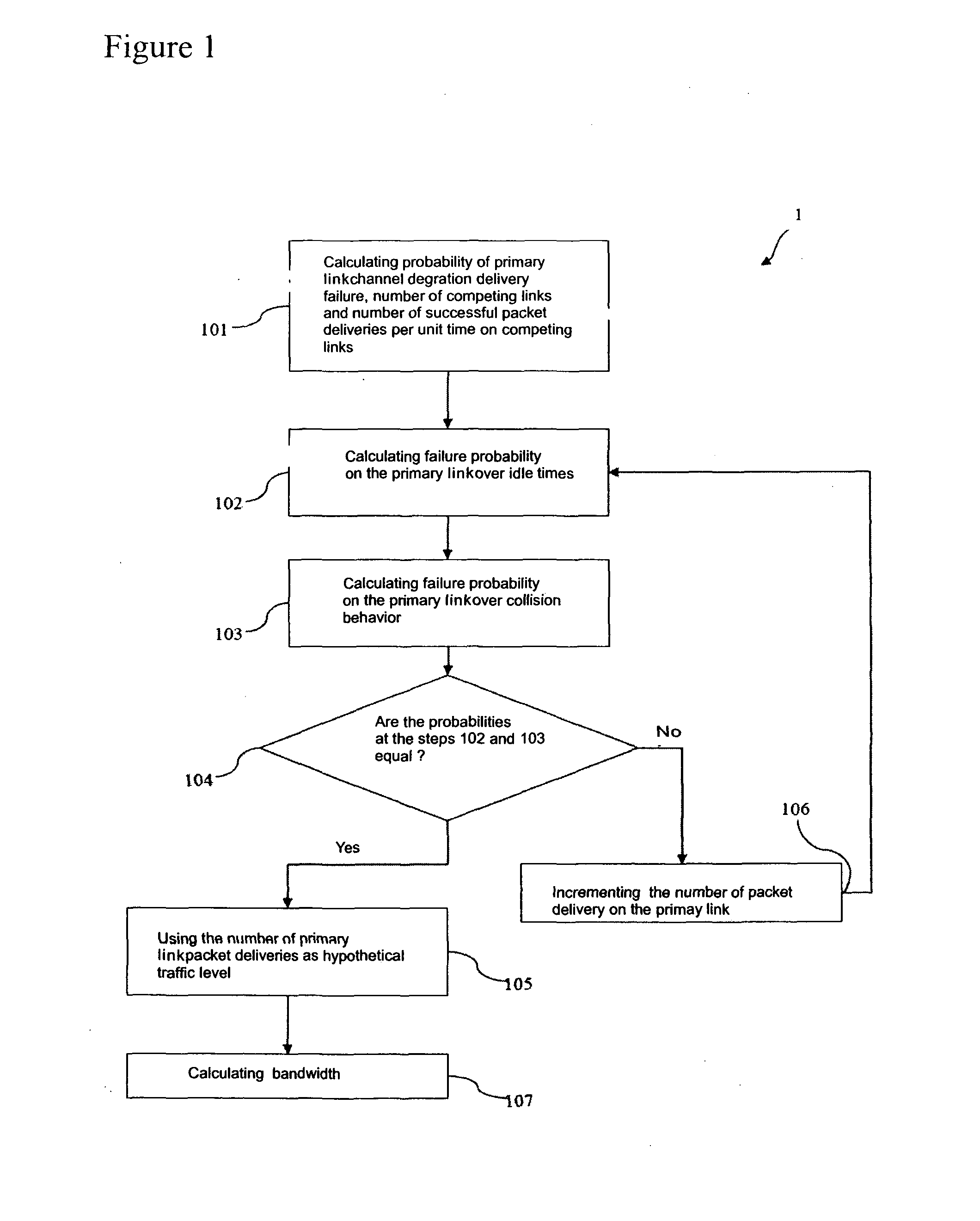Method for Estimation of Residual Bandwidth
- Summary
- Abstract
- Description
- Claims
- Application Information
AI Technical Summary
Benefits of technology
Problems solved by technology
Method used
Image
Examples
Embodiment Construction
[0008]A method for estimation of the residual bandwidth implemented to achieve the objective of this invention is illustrated in the accompanying drawing, in which:
[0009]FIG. 1 is a flow diagram of the method for estimation of residual bandwidth.
[0010]In the method for estimation of residual bandwidth that is the subject of the invention, networks activity is measured and relevant statistics on networks operation are obtained by exploiting the wireless nodes' inherent capability (coming from the nature of 802.11 protocol) of receiving / overhearing DATA-ACK messages broadcasted on the radio channel but not destined to themselves. In the presented method wireless link residual bandwidths are calculated according to analytical estimation techniques. As the residual bandwidth is estimated as a result of these calculations, it is possible to have better routing decisions concerning the adequateness of communication bandwidth (for example the link with higher residual bandwidth should be f...
PUM
 Login to View More
Login to View More Abstract
Description
Claims
Application Information
 Login to View More
Login to View More - R&D
- Intellectual Property
- Life Sciences
- Materials
- Tech Scout
- Unparalleled Data Quality
- Higher Quality Content
- 60% Fewer Hallucinations
Browse by: Latest US Patents, China's latest patents, Technical Efficacy Thesaurus, Application Domain, Technology Topic, Popular Technical Reports.
© 2025 PatSnap. All rights reserved.Legal|Privacy policy|Modern Slavery Act Transparency Statement|Sitemap|About US| Contact US: help@patsnap.com


